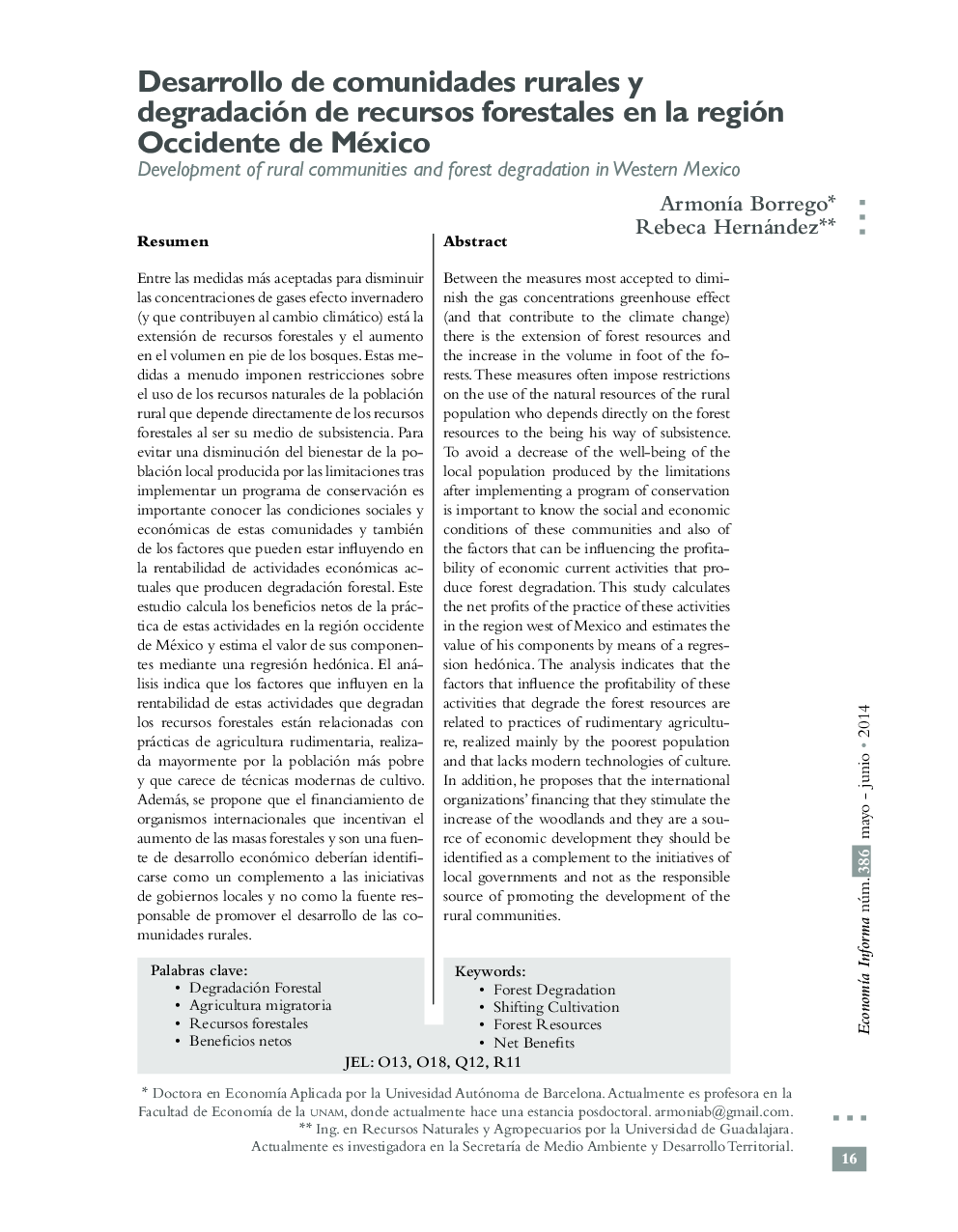| Article ID | Journal | Published Year | Pages | File Type |
|---|---|---|---|---|
| 7345451 | Economía Informa | 2014 | 15 Pages |
Abstract
Between the measures most accepted to diminish the gas concentrations greenhouse effect (and that contribute to the climate change) there is the extension of forest resources and the increase in the volume in foot of the forests. These measures often impose restrictions on the use of the natural resources of the rural population who depends directly on the forest resources to the being his way of subsistence. To avoid a decrease of the well-being of the local population produced by the limitations after implementing a program of conservation is important to know the social and economic conditions of these communities and also of the factors that can be influencing the profitability of economic current activities that produce forest degradation. This study calculates the net profits of the practice of these activities in the region west of Mexico and estimates the value of his components by means of a regression hedónica. The analysis indicates that the factors that influence the profitability of these activities that degrade the forest resources are related to practices of rudimentary agriculture, realized mainly by the poorest population and that lacks modern technologies of culture. In addition, he proposes that the international organizations' financing that they stimulate the increase of the woodlands and they are a source of economic development they should be identified as a complement to the initiatives of local governments and not as the responsible source of promoting the development of the rural communities.
Related Topics
Social Sciences and Humanities
Economics, Econometrics and Finance
Economics and Econometrics
Authors
ArmonÃa Borrego, Rebeca Hernández,
